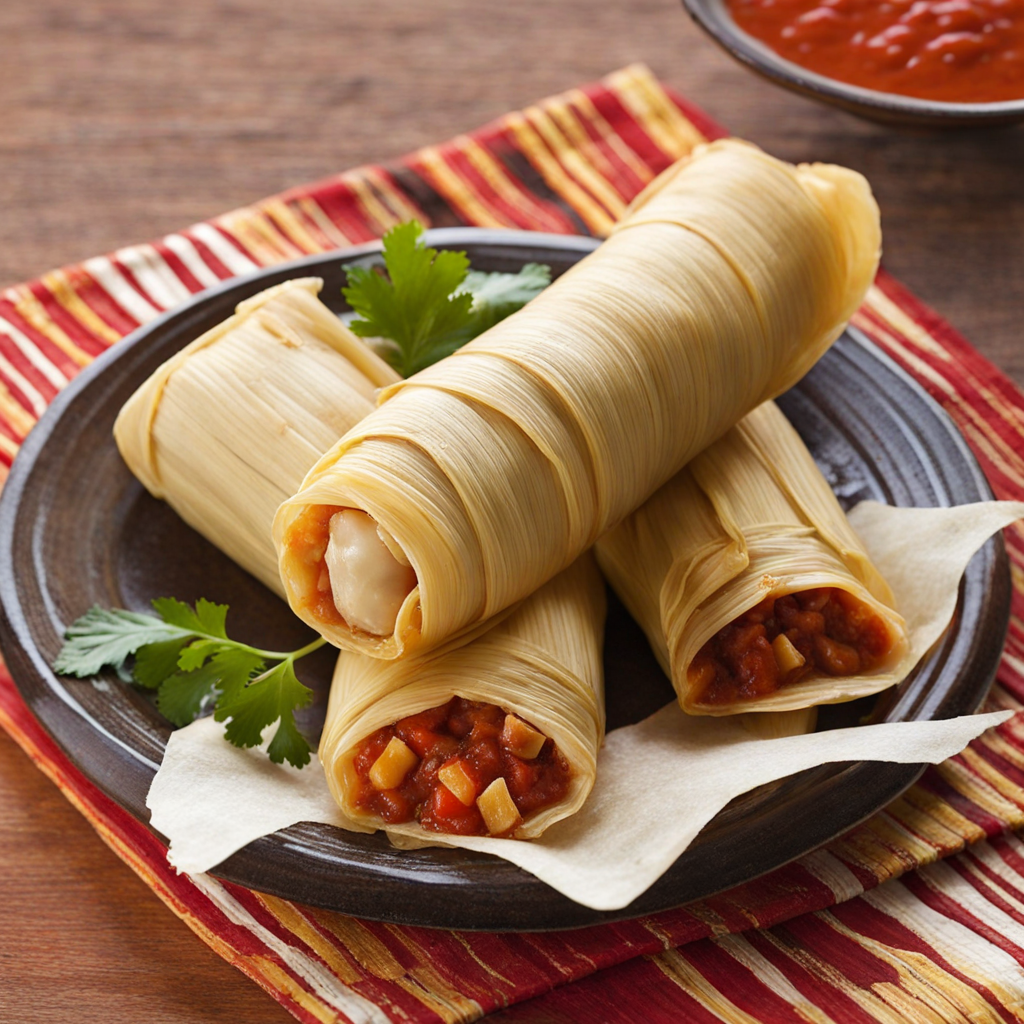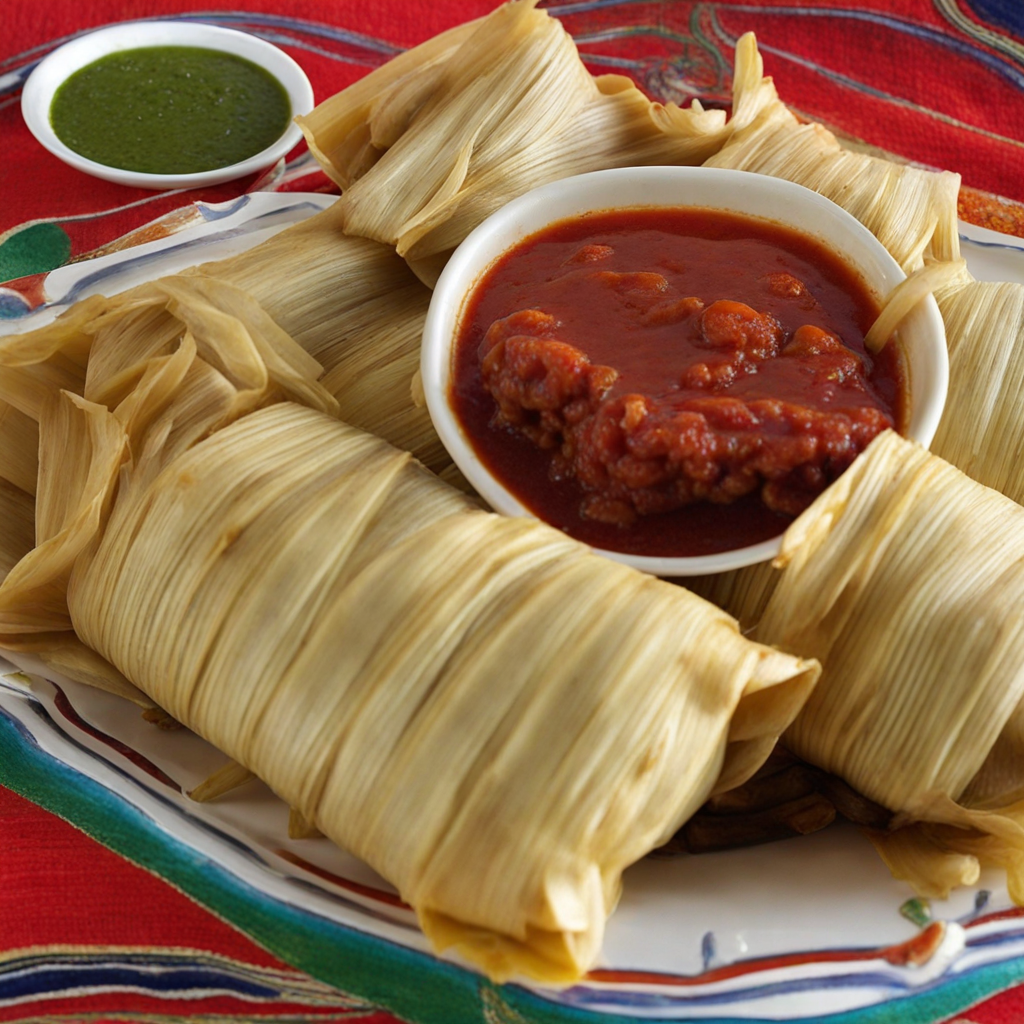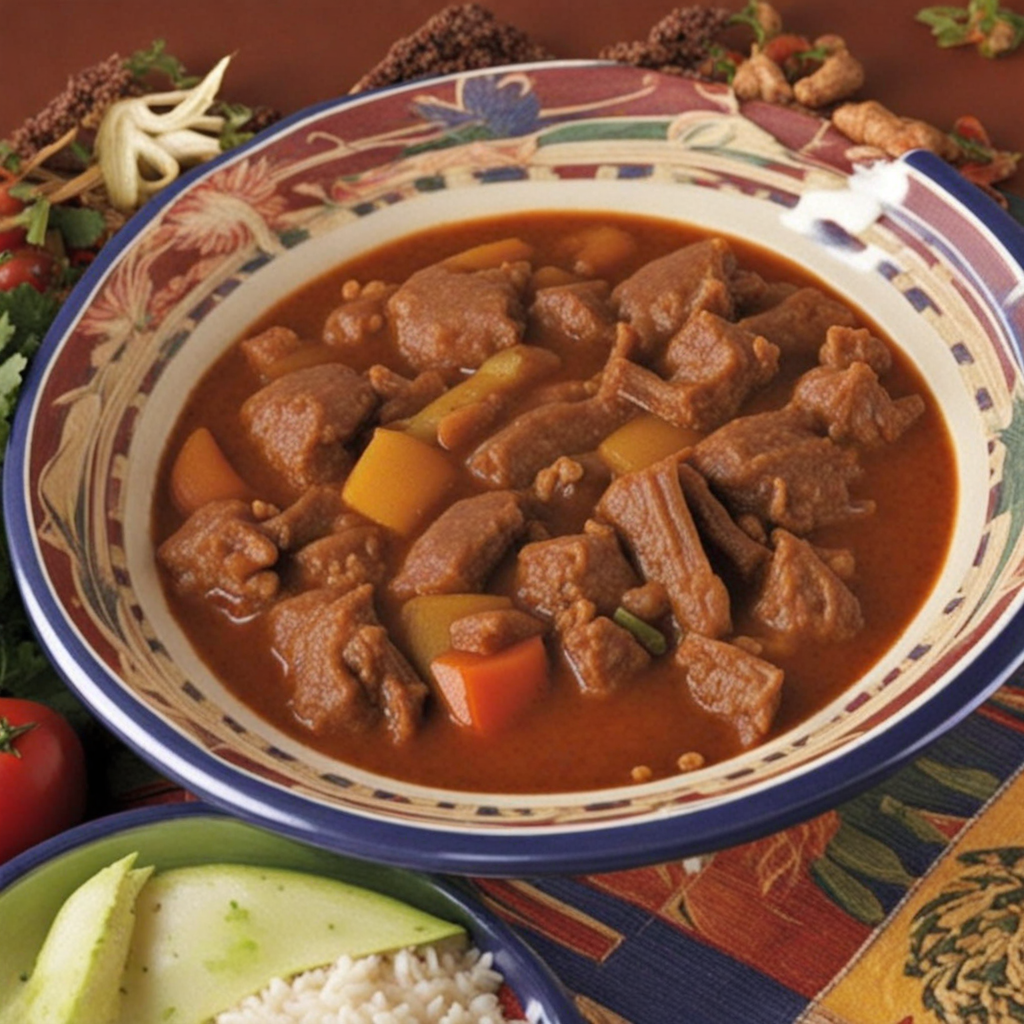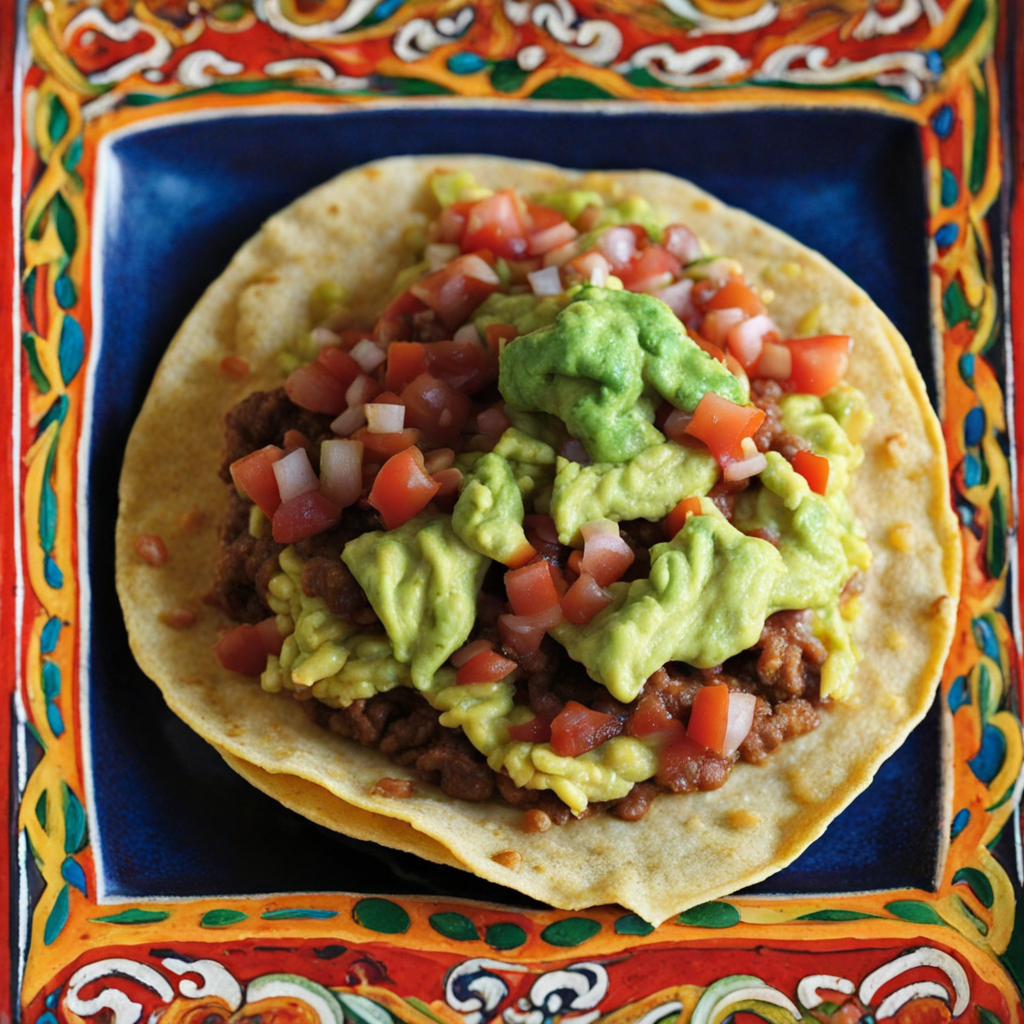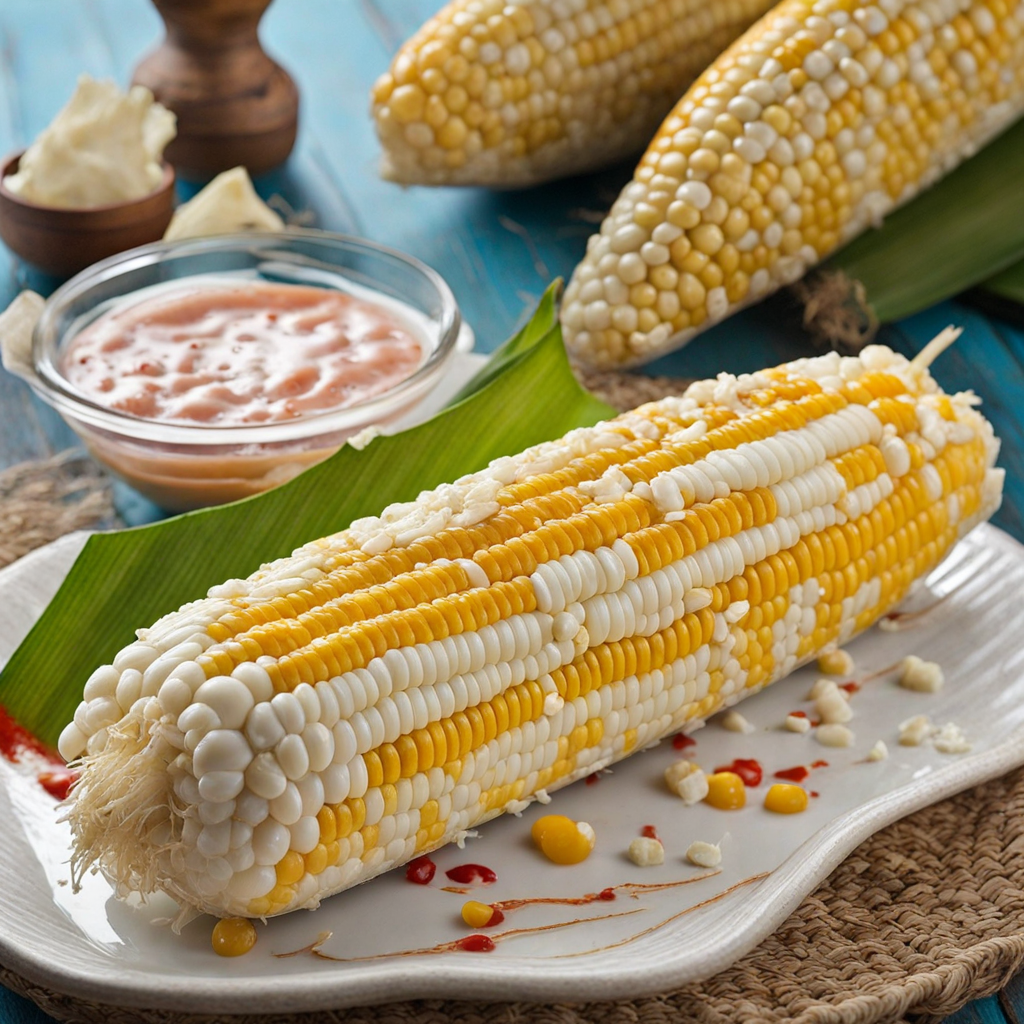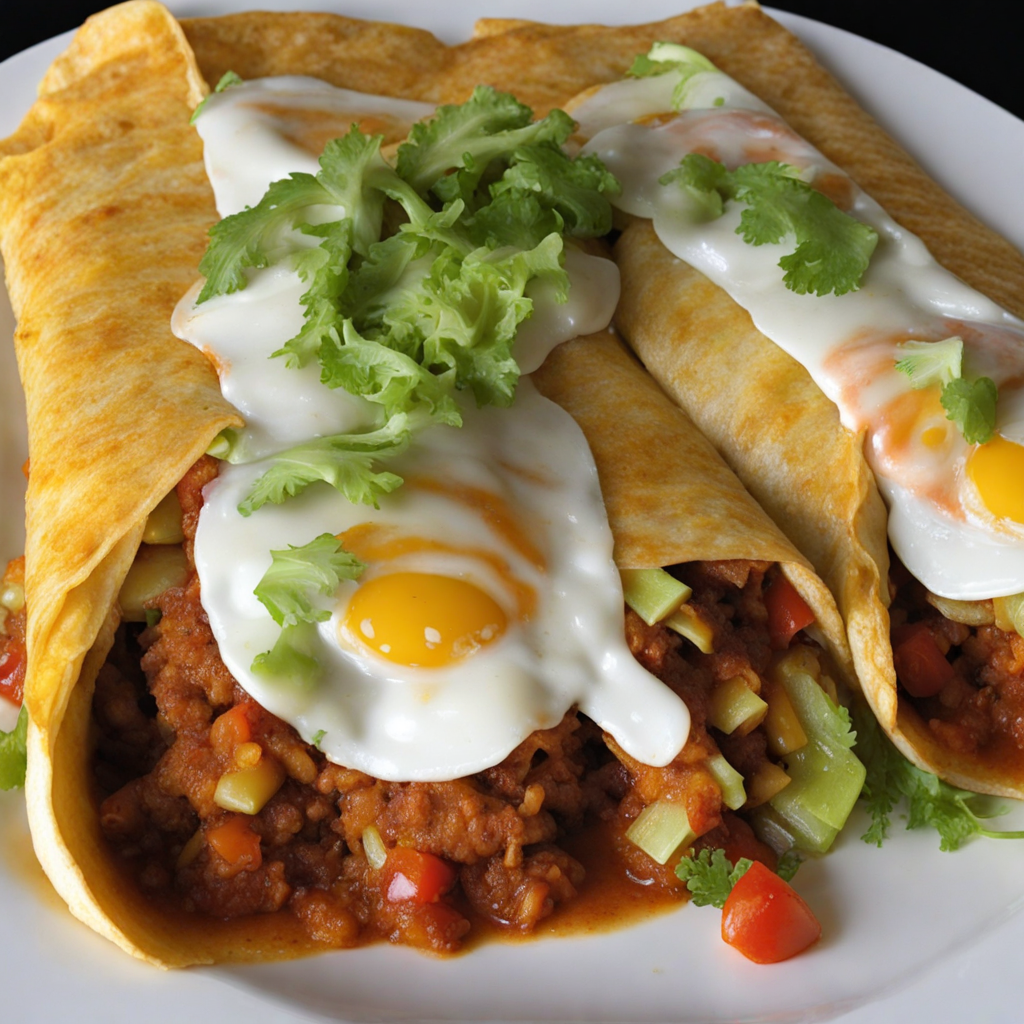Chuchitos
Chuchitos are a delightful Guatemalan dish that embodies the rich culinary traditions of the region. These small, savory treats are essentially a type of tamale made from masa (corn dough) that is filled with a variety of ingredients, typically featuring a combination of seasoned meat, such as chicken or pork, and sometimes even vegetables. The masa is prepared using a blend of nixtamalized corn, which gives it a distinct flavor and texture, creating a soft yet slightly firm base that holds up well during cooking. Wrapped in a corn husk and steamed, chuchitos develop a warm, comforting aroma that is irresistibly inviting. What sets chuchitos apart from other tamales is their unique sauce, often made from roasted tomatoes, peppers, and spices, which is drizzled generously over the top before serving. This rich sauce complements the masa and filling perfectly, adding a layer of depth and flavor that elevates the dish. The combination of the savory filling and the zesty sauce creates a harmonious balance that delights the palate, making each bite an explosion of taste. They are often served with a side of pickled vegetables or a fresh salsa, which adds a refreshing crunch and acidity to the meal. Chuchitos are not only a staple in Guatemalan cuisine but also a symbol of the country’s vibrant culture and communal spirit. They are popularly enjoyed during celebrations, family gatherings, and local festivals, making them a beloved comfort food for many. Whether you’re indulging in them as a snack or as part of a larger meal, chuchitos promise an authentic taste experience that transports you to the heart of Guatemala with every bite.
How It Became This Dish
Chuchitos: A Culinary Journey Through Guatemalan Tradition In the heart of Central America lies Guatemala, a country rich in culture, history, and culinary diversity. Among its most beloved traditional foods is the chuchito, a dish that encapsulates the essence of Guatemalan hospitality, heritage, and flavor. This delectable treat, often compared to tamales, offers a unique glimpse into the country's indigenous roots and colonial history, highlighting the intermingling of cultures that define Guatemalan identity. Origins: The Birth of Chuchitos The chuchito’s origins can be traced back to the ancient Maya civilization, which thrived in Mesoamerica long before European contact. The Maya were skilled agriculturalists who cultivated corn, beans, and squash, forming the backbone of their diet. Corn, in particular, held a sacred place in Maya cosmology and was essential to their survival. The word for corn in various Mayan languages signifies life and sustenance, and it is no surprise that corn-based dishes became staples in their culinary repertoire. Chuchitos are essentially a type of tamale, but they possess distinct characteristics that set them apart. While tamales are often wrapped in banana leaves, chuchitos are typically made with masa (corn dough) that is shaped into a small rectangle and filled with flavorful ingredients. The filling can vary, but it commonly features shredded chicken or pork, often cooked in a rich tomato-based sauce, along with spices and vegetables. This filling is then wrapped in masa, molded into a compact shape, and steamed until tender. The name “chuchito” is believed to derive from the word “chucho,” which is a colloquial term for dog in some regions of Guatemala. This playful nomenclature may have originated from the dish’s small, compact shape, resembling a little dog. Whatever the etymology, chuchitos have become an integral part of Guatemalan cuisine. Cultural Significance: A Symbol of Community Chuchitos are more than just food; they are a symbol of community and togetherness. In Guatemala, food is often at the center of social gatherings, celebrations, and family events. Preparing chuchitos is a communal activity, usually involving family members working together to create large batches. The process of making chuchitos is a beautiful blend of tradition and teamwork, as each person contributes their expertise—whether it’s preparing the masa, cooking the filling, or wrapping the chuchitos. During festive occasions, chuchitos are commonly served at weddings, birthdays, and religious celebrations. They are often accompanied by a spicy tomato sauce known as “salsa de tomate” and sometimes served with pickled vegetables or a side of guacamole. This versatility allows chuchitos to adapt to various occasions, making them a favorite among locals and visitors alike. Moreover, chuchitos are a representation of Guatemala’s rich cultural tapestry. The fusion of indigenous ingredients and Spanish culinary techniques reflects the country’s colonial past. After the Spanish conquest in the 16th century, new ingredients such as tomatoes, garlic, and various spices were introduced to the local diet. The incorporation of these elements into chuchitos speaks to the resilience and adaptability of Guatemalan cuisine, as it evolved while maintaining its indigenous roots. Development Over Time: A Culinary Evolution As Guatemala has transformed over the centuries, so too have chuchitos. The dish has adapted to different regions and the influence of globalization. While the traditional filling remains popular, variations have emerged, such as vegetarian chuchitos made with cheese and vegetables or even sweet versions filled with fruits and nuts. These adaptations showcase the creativity of Guatemalan cooks, allowing chuchitos to remain relevant in contemporary culinary scenes. In urban areas, chuchitos have become a popular street food, often sold by vendors who specialize in this delightful treat. This shift has made chuchitos accessible to a broader audience, allowing locals and tourists to savor their flavors on the go. The convenience of street food has also led to the rise of chuchito festivals, where vendors gather to showcase their unique recipes and attract food lovers. The globalization of food culture has introduced chuchitos to international palates, allowing for greater appreciation of Guatemalan cuisine beyond its borders. Food enthusiasts have taken to social media platforms to share their culinary experiences, leading to increased interest in traditional Guatemalan dishes. Chuchitos, with their simple yet flavorful profile, have become a symbol of this culinary exploration, sparking curiosity and admiration among food lovers worldwide. A Culinary Legacy Today, chuchitos stand as a testament to the enduring legacy of Guatemalan food culture. They embody the spirit of togetherness, resilience, and creativity that characterizes the Guatemalan people. As more chefs and home cooks embrace traditional recipes, the future of chuchitos remains bright. The dish continues to evolve while honoring its origins, reflecting the dynamic nature of Guatemalan cuisine. In recent years, there has been a resurgence of interest in traditional cooking methods, with many people seeking to preserve their culinary heritage. Local communities have initiated programs to teach younger generations the art of making chuchitos, ensuring that the skills and traditions associated with this cherished dish are passed down. This commitment to preserving culinary traditions is essential for maintaining a sense of identity and connection to one’s roots. Conclusion: A Dish of Connection Chuchitos are more than just a delightful culinary creation; they are a bridge that connects past and present, tradition and innovation, the individual and the community. They tell the story of a people who have weathered centuries of change while holding onto their culinary roots. For those who partake in this Guatemalan dish, chuchitos offer a taste of history, culture, and the warmth of shared experiences. Whether enjoyed at a family gathering, a street food stall, or a festive celebration, chuchitos remain a beloved symbol of Guatemalan identity, a delicious reminder of the rich tapestry of flavors that define this extraordinary country.
You may like
Discover local flavors from Guatemala


